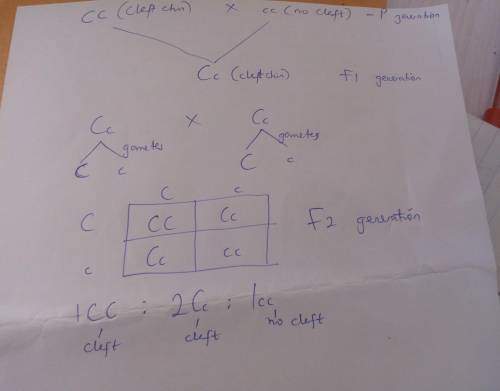
Biology, 30.07.2019 23:00 homelanie21
In humans, a cleft chin is dominant and no-cleft is recessive. what will the generations look like? assume that mendel’s method of crossing two true breeding parents with opposite traits is followed. check all that apply. the p generation, f1 generation, and f2 generation will have all cleft chins. the p generation, f1 generation, and f2 generation will have all no-cleft chins. the p generation and f1 generation will have all cleft chins. the f1 generation will have all cleft chins. the p generation and f2 generation will have all no-cleft chins. the p generation and f2 generation will have cleft chins and no-cleft chins. the p generation, f1 generation, and f2 generation will have cleft chins and no-cleft chins.

Answers: 2


Other questions on the subject: Biology

Biology, 22.06.2019 06:00, sassyparker1216
Which is one example of a phenotypic change that is not genetic
Answers: 3

Biology, 22.06.2019 08:20, AgarioEdit
The table lists the observations students made about four specimens under a microscope. based on these observations, what specimens did the students examine? animal plant virus prokaryote cell membrane present ribosomes present lysosomes present nuclear membrane present cell wall present ribosomes present nuclear membrane absent cell wall present ribosomes present nucleus present large vacuole present reproduces inside of a cell nucleus absent rna present 2019 edmentum all rights reserved intl
Answers: 2

Biology, 22.06.2019 11:30, aaron0828
2. cheryl hears a new song on the radio every day during the week on her commute to work. surprisingly, when the song comes on at a party on saturday night, she knows most of the words without trying. describe the three ways that we use cognition to learn without reinforcement. which type of cognitive learning without reinforcement best explains how cheryl knew the song lyrics? explain your answer.
Answers: 1
You know the right answer?
In humans, a cleft chin is dominant and no-cleft is recessive. what will the generations look like?...
Questions in other subjects:



Chemistry, 21.08.2020 22:01






Mathematics, 21.08.2020 22:01




